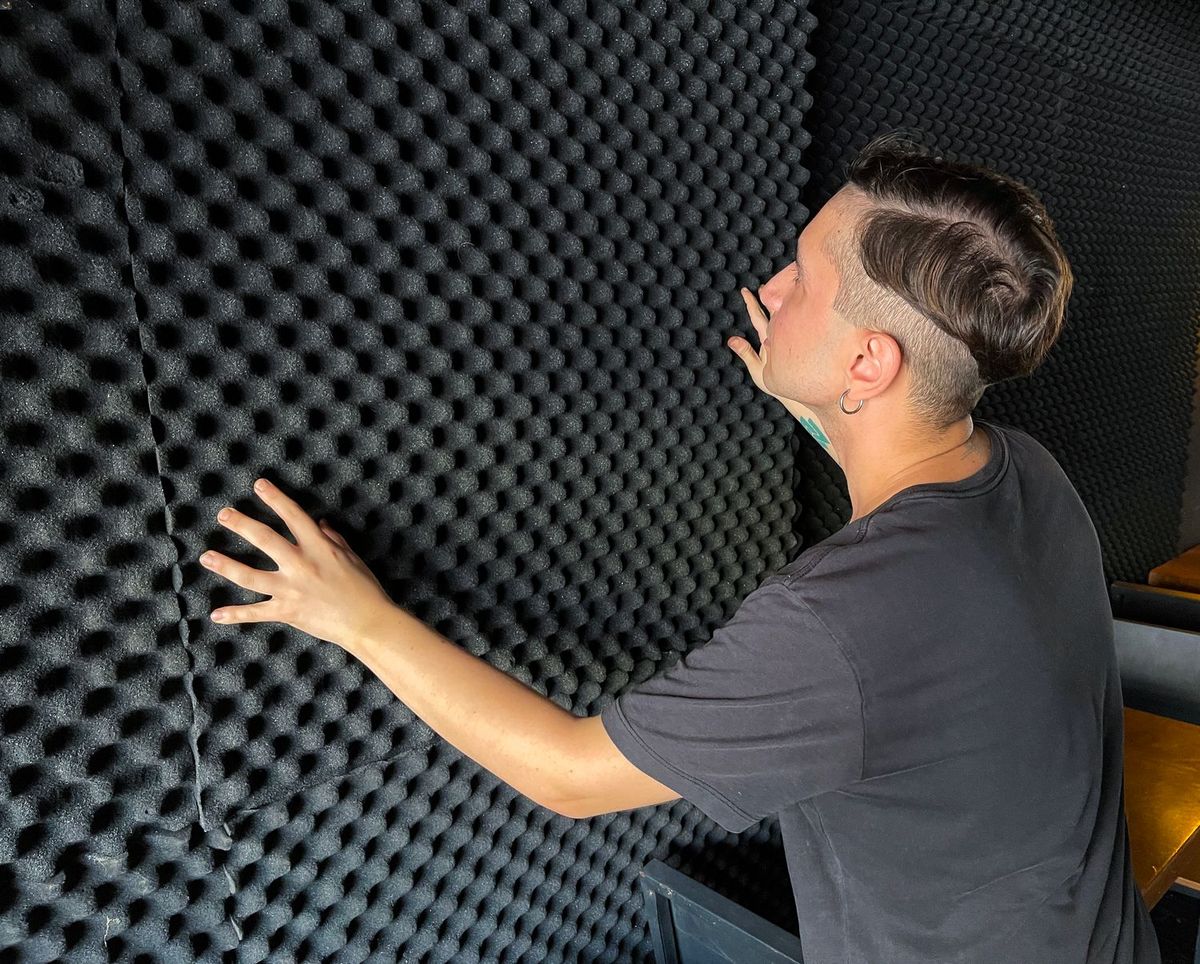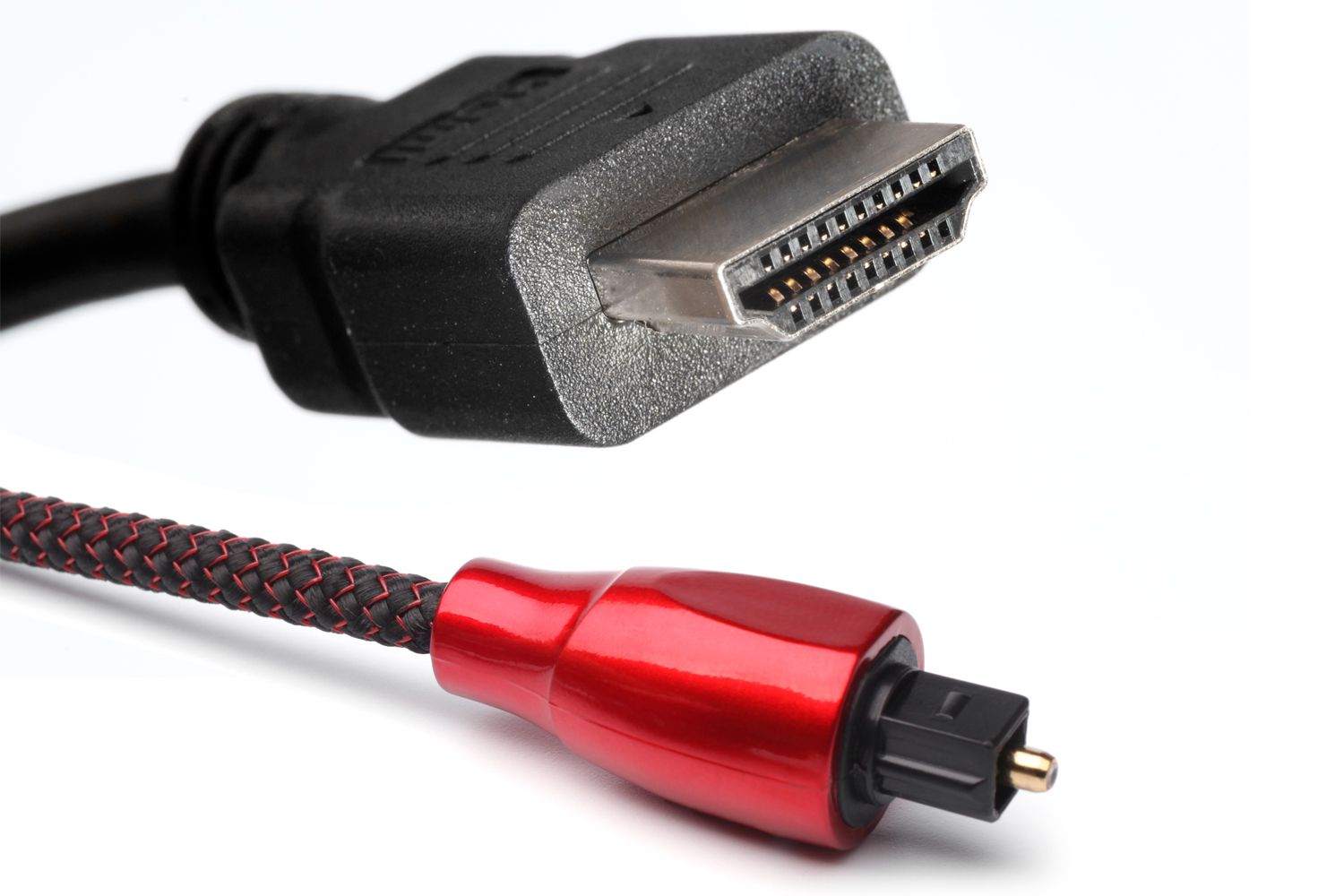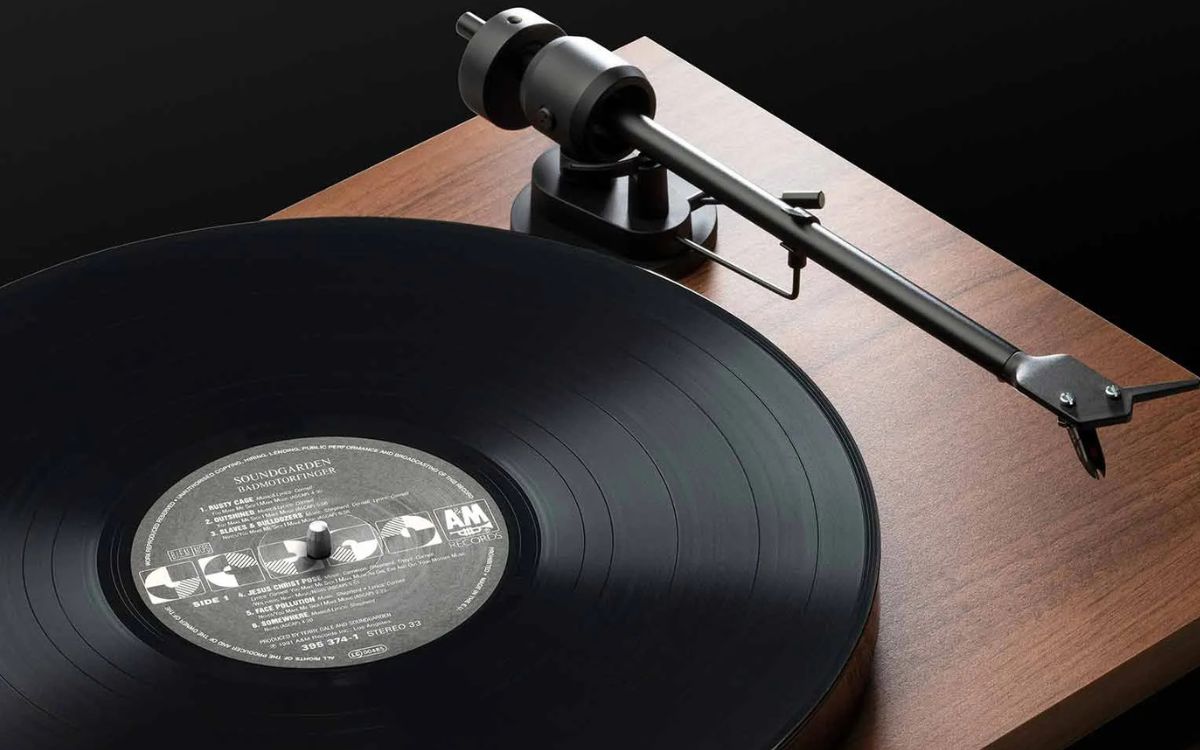Home>Production & Technology>Soundproofing>Which Is Better For Soundproofing? Latex Or Silicone?
Soundproofing
Which Is Better For Soundproofing? Latex Or Silicone?
Published: January 26, 2024
Discover the best soundproofing solution for your needs - compare the effectiveness of latex and silicone to make an informed decision.
(Many of the links in this article redirect to a specific reviewed product. Your purchase of these products through affiliate links helps to generate commission for AudioLover.com, at no extra cost. Learn more)
Table of Contents
- Introduction
- Overview of Soundproofing Materials
- Latex as a Soundproofing Material
- Advantages of Latex for Soundproofing
- Disadvantages of Latex for Soundproofing
- Silicone as a Soundproofing Material
- Advantages of Silicone for Soundproofing
- Disadvantages of Silicone for Soundproofing
- Comparison of Latex and Silicone for Soundproofing
- Factors to Consider When Choosing Between Latex and Silicone
- Conclusion
Introduction
When it comes to soundproofing, choosing the right materials is crucial to create a quiet and serene environment. Two commonly used materials for soundproofing are latex and silicone. While both materials offer their own set of benefits, it’s important to understand their strengths and weaknesses in order to make an informed decision.
Latex and silicone are versatile materials that can be used for a variety of applications, including soundproofing. Latex, derived from natural sources such as the rubber tree, is known for its flexibility and durability. On the other hand, silicone, a synthetic compound, is valued for its excellent sealing properties and resistance to extreme temperatures.
In this article, we will delve into the merits of latex and silicone as soundproofing materials. We will explore their advantages, disadvantages, and compare them to help you determine which one is better suited for your soundproofing needs. Whether you are soundproofing a room in your house, a recording studio, or a commercial space, understanding the characteristics of these materials will help you make a sound decision.
So, let’s dive in and explore the world of latex and silicone as soundproofing materials, and ultimately discover which one reigns supreme.
Overview of Soundproofing Materials
Before we delve into the specific details of latex and silicone as soundproofing materials, let’s first gain a general understanding of soundproofing and the materials used in the process.
Soundproofing aims to reduce or eliminate unwanted noise by blocking, absorbing, or isolating sound waves. It involves the use of various materials and techniques to create a barrier against noise transmission, ensuring a quieter and more peaceful environment.
There are several types of materials commonly used for soundproofing purposes, including foam, fiberglass, mass-loaded vinyl (MLV), cork, rubber, and more. Each material has its own unique properties and applications, making them suitable for different scenarios.
Foam, for example, is a popular choice for soundproofing due to its ability to absorb sound waves and reduce echo. Fiberglass is known for its excellent insulation properties, making it effective in controlling both thermal and sound energy. MLV, on the other hand, is a dense vinyl material that can block sound transmission effectively.
When it comes to latex and silicone, these materials offer unique characteristics that make them viable options for soundproofing. Their versatility, durability, and sealing capabilities make them stand out from other materials in certain applications.
Now that we have a basic understanding of soundproofing materials, let’s explore the specific features and benefits of latex and silicone for soundproofing purposes.
Latex as a Soundproofing Material
Latex, derived from the sap of the rubber tree, is a versatile material that offers several advantages when it comes to soundproofing. With its elasticity and flexibility, latex can be easily applied to different surfaces and shapes, making it suitable for a wide range of soundproofing applications.
One of the key advantages of latex as a soundproofing material is its ability to absorb sound waves. When used as a coating or in the form of soundproofing panels, latex can effectively dampen and reduce airborne noise, helping to create a quieter environment. It acts as a barrier by converting sound energy into heat energy, thereby minimizing sound transmission.
In addition to its sound-absorbing properties, latex also offers excellent vibration damping capabilities. This makes it ideal for reducing impact noise, such as footsteps or noise generated by machinery. By absorbing vibrations, latex can prevent the transfer of noise through the structure or surface it is applied to.
Furthermore, latex is a highly durable material that can withstand wear and tear, making it suitable for long-term soundproofing solutions. It is resistant to chemicals, moisture, and UV radiation, ensuring its longevity and effectiveness over time.
Another benefit of latex is its eco-friendly nature. Latex is a natural material and can be sustainably harvested from rubber trees, making it a renewable and environmentally-friendly choice for soundproofing.
However, it’s worth noting that there are some drawbacks to using latex for soundproofing. Latex-based products may have a distinct odor, especially when they are freshly applied. This odor can diminish over time, but it is important to consider this factor when selecting latex as a soundproofing material.
Overall, latex offers a versatile and effective solution for soundproofing. Its sound-absorbing and vibration-damping properties, along with its durability and eco-friendliness, make it a favorable choice for a variety of soundproofing applications.
Advantages of Latex for Soundproofing
Latex, as a soundproofing material, offers several advantages that make it a popular choice for various applications. Let’s explore some of the key advantages of using latex for soundproofing purposes:
- Excellent sound absorption: Latex has the ability to absorb sound waves effectively, reducing airborne noise and creating a quieter environment. Whether it’s in the form of soundproofing panels or a coating, latex can significantly dampen sound and improve acoustics.
- Vibration damping: Latex also excels at damping vibrations, making it ideal for reducing impact noise. By absorbing vibrations, it prevents the transfer of noise through the surface or structure, minimizing the impact of footsteps or the noise generated by machinery.
- Versatility: Latex is a highly versatile material that can be applied to a variety of surfaces and shapes. It can be used as a coating, sprayed or rolled onto walls and ceilings, or incorporated into soundproofing panels. Its flexibility allows for easy installation and customization to fit different soundproofing needs.
- Durability: Latex is known for its durability and resistance to wear and tear. It can withstand the test of time, ensuring long-term effectiveness as a soundproofing material. Additionally, latex is resistant to moisture, chemicals, and UV radiation, making it suitable for both indoor and outdoor applications.
- Eco-friendly: Latex is derived from the sap of the rubber tree, making it a natural and renewable resource. The harvesting process is sustainable, as it does not harm the trees. This eco-friendly nature makes latex a popular choice for those seeking environmentally-conscious soundproofing solutions.
Overall, the advantages of using latex for soundproofing include its excellent sound absorption and vibration damping capabilities, versatility in application, durability, and eco-friendliness. These qualities make latex a reliable and effective choice for creating a quieter and more comfortable environment.
Disadvantages of Latex for Soundproofing
While latex offers many advantages as a soundproofing material, it is important to consider its disadvantages as well. Understanding the limitations of latex will help you make an informed decision when choosing the right soundproofing material. Here are some of the key disadvantages of using latex for soundproofing:
- Odor: Latex-based products may have a distinct odor, especially when they are freshly applied. This odor can be particularly strong in closed spaces and may take some time to dissipate. It is important to consider the potential odor when selecting latex for soundproofing, especially in areas where the smell may be a concern.
- Sensitivity to temperature changes: Latex can be sensitive to extreme temperatures, which may affect its performance as a soundproofing material. In high-temperature environments, latex may soften or become less effective at sound absorption and vibration damping. Similarly, in freezing temperatures, latex may become brittle and prone to cracking. It is important to assess the temperature conditions of the soundproofing area before deciding on latex as the material for the project.
- Compatibility with certain surfaces: While latex is versatile in application, it may not adhere well to all surfaces. Some substrates can affect the adhesion and longevity of latex coatings or panels. Before using latex for soundproofing, it is essential to ensure proper surface preparation and compatibility testing to achieve optimal results.
- Cost: Depending on the specific application and quality of latex used, it may come at a higher cost compared to other soundproofing materials. It is important to consider your budget and weigh the advantages of latex against its cost to determine if it is the most cost-effective option for your soundproofing project.
- Application complexity: While latex can be a versatile material, its application may require specialized techniques or equipment, depending on the specific project requirements. This can add complexity to the installation process and may require professional assistance or specialized knowledge to ensure proper application.
Considering these disadvantages, it is crucial to evaluate the specific needs and constraints of your soundproofing project before opting for latex as the chosen material. Assessing factors such as environmental conditions, installation requirements, and budget will help you make an informed decision and determine if latex aligns with your soundproofing goals.
Silicone as a Soundproofing Material
Silicone, a synthetic compound, is another popular choice for soundproofing due to its unique properties and versatility. Silicone offers several advantages when used as a soundproofing material, making it an attractive option for various applications.
One of the key advantages of silicone as a soundproofing material is its excellent sealing properties. Silicone is known for its ability to create a tight and durable seal, making it effective in blocking the passage of sound waves. Whether used as a sealant around windows and doors or applied as a coating, silicone can help reduce noise leakage and improve sound insulation.
In addition to its sealing capabilities, silicone is resistant to temperature extremes, moisture, and UV radiation, making it suitable for both indoor and outdoor soundproofing applications. It remains stable and maintains its effectiveness, even in harsh environments. This durability ensures long-lasting soundproofing solutions that can withstand the test of time.
Furthermore, silicone offers excellent flexibility, allowing it to adapt to different surfaces and contours. Its ability to conform to irregular shapes ensures a seamless and effective sound barrier. Silicone can be applied to various materials, such as glass, metal, wood, and plastic, making it a versatile choice for different soundproofing needs.
Another notable advantage of silicone is its resistance to mold and mildew. This makes it an ideal choice for soundproofing projects in areas prone to moisture or humidity, such as bathrooms or basements. Silicone’s resistance to water damage ensures that it maintains its soundproofing properties and prevents the growth of harmful molds.
However, it’s important to consider some limitations of silicone as a soundproofing material. While it offers excellent sealing properties, it may not provide as much sound absorption as other materials, such as foam or fiberglass. Additionally, the application of silicone may require proper surface preparation and skilled installation for optimal results.
In summary, silicone offers impressive sealing properties, durability, flexibility, and resistance to moisture, making it a valuable material for soundproofing. Its ability to create a tight seal and adapt to various surfaces makes it an effective sound barrier. However, it’s important to consider the specific requirements of your soundproofing project and its limitations before choosing silicone as the preferred material.
Advantages of Silicone for Soundproofing
Silicone, as a soundproofing material, offers several advantages that make it a preferred choice for various applications. Let’s explore some of the key advantages of using silicone for soundproofing:
- Excellent sealing properties: Silicone is known for its ability to create a tight and durable seal, making it highly effective in blocking the passage of sound waves. Whether used as a sealant around windows and doors or applied as a coating on surfaces, silicone helps minimize noise leakage and improve sound insulation.
- Temperature and weather resistance: Silicone is resistant to temperature extremes, moisture, and UV radiation, making it suitable for both indoor and outdoor soundproofing applications. It remains stable and maintains its effectiveness, even in harsh environmental conditions. This durability ensures long-lasting soundproofing solutions that can withstand the test of time.
- Flexibility and adaptability: Silicone offers excellent flexibility, allowing it to conform to different surfaces and contours. Its ability to adapt to irregular shapes ensures a seamless and effective sound barrier. Silicone can be applied to various materials, including glass, metal, wood, and plastic, making it a versatile choice for different soundproofing needs.
- Resistance to mold and mildew: Silicone is resistant to mold and mildew growth. This is especially beneficial for soundproofing projects in areas prone to moisture or humidity, such as bathrooms or basements. Silicone’s resistance to water damage ensures that it maintains its soundproofing properties and prevents the growth of harmful molds.
- Low maintenance: Silicone requires minimal maintenance once applied. It is easy to clean and does not deteriorate over time. Its durability allows for long-term use without the need for frequent repairs or replacements.
These advantages make silicone a valuable material for soundproofing purposes, providing effective sealing, durability, flexibility, and resistance to moisture. Whether you are soundproofing your home, office, or any other space, silicone can contribute significantly to creating a quieter and more comfortable environment.
Disadvantages of Silicone for Soundproofing
While silicone offers many advantages as a soundproofing material, it’s important to consider its disadvantages as well. Understanding the limitations of silicone will help you make an informed decision when choosing the right soundproofing material. Here are some of the key disadvantages of using silicone for soundproofing:
- Sound absorption limitations: Silicone, primarily used for sealing and blocking sound transmission, may not provide as much sound absorption as other materials like foam or fiberglass. If sound absorption is a primary concern, you may need to consider combining silicone with additional sound-absorbing materials.
- Application complexity: Proper application of silicone for soundproofing can be more challenging than other materials. It may require specialized techniques or equipment to ensure a proper seal and optimal soundproofing performance. Improper application could result in reduced effectiveness and compromised soundproofing results.
- Cost consideration: Silicone can be more expensive compared to other soundproofing materials like foam or mass-loaded vinyl (MLV). If you are working with a tight budget, the cost of silicone may be a limiting factor in your soundproofing project. It’s important to assess your budget and weigh the advantages of silicone against its cost.
- Bonding limitations: While silicone offers excellent adhesion to various surfaces, it may not bond as effectively to certain materials. It is important to ensure proper surface preparation and compatibility testing to optimize the bonding and longevity of silicone soundproofing applications.
- Sensitivity to temperature: While silicone is known for its temperature resistance, extreme heat can cause it to soften or deteriorate over time. Additionally, extreme cold temperatures can lead to decreased flexibility and potential cracking. It’s important to consider the temperature conditions of the soundproofing area before deciding on silicone as the material for your project.
Considering these disadvantages, it is crucial to evaluate the specific needs and constraints of your soundproofing project before opting for silicone as the chosen material. Assessing factors such as sound absorption requirements, application complexity, budget, bonding considerations, and temperature conditions will help you make an informed decision and determine if silicone aligns with your soundproofing goals.
Comparison of Latex and Silicone for Soundproofing
When deciding between latex and silicone for soundproofing, it’s important to compare their key characteristics and determine which material is better suited for your specific needs. Let’s explore the main points of comparison between latex and silicone:
- Sound Absorption: Latex has excellent sound-absorbing properties, effectively reducing airborne noise and minimizing echoes. Silicone, on the other hand, focuses more on sealing and blocking sound transmission rather than absorbing it. If sound absorption is a primary concern, latex would be the better choice.
- Sealing and Durability: Silicone excels in creating a tight and durable seal, helping to block sound transmission effectively. It is resistant to moisture, UV radiation, and extreme temperatures, making it ideal for long-lasting soundproofing projects. Latex is also durable and moisture-resistant, but may not provide the same level of sealing as silicone.
- Flexibility: Both latex and silicone offer flexibility, allowing for easy application on different surfaces and shapes. However, silicone’s ability to conform more effectively to irregular shapes gives it an advantage in creating a seamless sound barrier. Latex can be less adaptable in certain scenarios.
- Eco-Friendliness: Latex is derived from natural sources, making it a more eco-friendly choice compared to silicone, which is a synthetic compound. If environmental sustainability is a priority, latex may be the preferable option.
- Application Complexity: While both materials require proper surface preparation and application techniques, silicone can be more complex to install due to its specific sealing requirements. Latex, on the other hand, offers more versatility in terms of application methods and is generally easier to work with.
- Cost: In terms of cost, latex is generally more affordable than silicone. If you’re working within a tight budget, latex may be the more cost-effective option for your soundproofing project.
Considering these factors, the better choice between latex and silicone for soundproofing depends on your specific requirements. If sound absorption is crucial, latex’s excellent sound-absorbing properties make it the preferred material. On the other hand, if sealing and durability are key considerations, silicone’s superior sealing capabilities and resistance to extreme conditions give it an advantage.
Ultimately, it’s important to assess your soundproofing goals, budget constraints, and specific project requirements to determine whether latex or silicone is the optimal choice for your soundproofing needs. Consulting with a soundproofing professional can also provide valuable insights and guidance in selecting the most suitable material for your project.
Factors to Consider When Choosing Between Latex and Silicone
When faced with the decision of choosing between latex and silicone for soundproofing, there are several important factors to consider. These factors will help you determine which material is best suited for your specific soundproofing needs. Here are some key considerations:
- Sound Absorption Requirements: Consider the level of sound absorption needed for your space. If you require strong sound absorption capabilities, latex is the better choice due to its excellent sound-absorbing properties. However, if sound blocking and sealing are the priority, silicone may be more suitable.
- Sealing and Blocking Sound Transmission: Evaluate the importance of creating a tight seal and blocking sound transmission. Silicone excels in providing a durable and effective seal, preventing sound leakage. On the other hand, latex offers some sealing properties but may not be as effective as silicone in blocking sound transmission.
- Flexibility and Adaptability: Consider the surfaces and shapes that need to be covered with soundproofing material. Silicone’s flexibility and ability to conform well to irregular surfaces and contours give it an edge in this aspect. If your project requires conforming to unique shapes, silicone may be the better choice.
- Environmental Impact: If environmental sustainability is a priority for you, consider the eco-friendly nature of latex. Derived from natural sources, latex is a renewable and biodegradable material. Silicone, being a synthetic compound, may have a higher environmental impact.
- Application Complexity: Assess the complexity of the application process and your level of expertise. Silicone may require specialized techniques and equipment to ensure proper sealing, which may be more complex. Latex, on the other hand, offers more versatility in terms of application methods and is generally easier to work with.
- Budget Considerations: Determine your budget for the soundproofing project. Latex is generally more affordable compared to silicone. If you are working with a tight budget, latex may be the more cost-effective option without compromising on soundproofing effectiveness.
Considering these factors, it is important to prioritize your specific soundproofing needs and weigh the advantages and disadvantages of both materials. Assessing factors such as sound absorption requirements, sealing capabilities, flexibility, environmental impact, application complexity, and budget will help you make an informed decision.
Additionally, consulting with a soundproofing professional can provide valuable insights and recommendations based on the specific requirements of your project. They can help guide you in choosing the most suitable material and ensure that the soundproofing solution meets your needs and expectations.
Conclusion
Choosing the right material for soundproofing is essential in creating a peaceful and quiet environment. When comparing latex and silicone, it is clear that both materials offer unique advantages and disadvantages. Understanding these factors will help you determine which material is better suited for your specific soundproofing needs.
Latex excels in sound absorption and vibration damping, making it ideal for reducing airborne noise and impact noise. Its flexibility, durability, and eco-friendly nature make it a versatile and environmentally-conscious choice. However, it may have limitations in sealing capabilities and may require proper surface preparation.
On the other hand, silicone is highly effective in sealing and blocking sound transmission. Its durability, resistance to extreme temperatures and moisture, and flexibility allow for excellent adaptability to various surfaces and shapes. However, it may not provide the same level of sound absorption as latex and can be more complex in terms of application and potentially higher in cost.
When choosing between latex and silicone, factors such as sound absorption requirements, sealing needs, flexibility, environmental impact, application complexity, and budget should be carefully considered. Assessing these factors will help you make an informed decision and select the material that aligns with your soundproofing goals.
It’s important to remember that every soundproofing project is unique, and there is no one-size-fits-all solution. Consulting with a soundproofing professional can provide valuable guidance and expertise to ensure the best outcome for your specific project.
Ultimately, whether you choose latex or silicone, both materials offer valuable soundproofing properties that can contribute to creating a quieter and more comfortable space. With the right material and proper installation, you can successfully achieve effective soundproofing and enjoy a peaceful environment free from unwanted noise.











